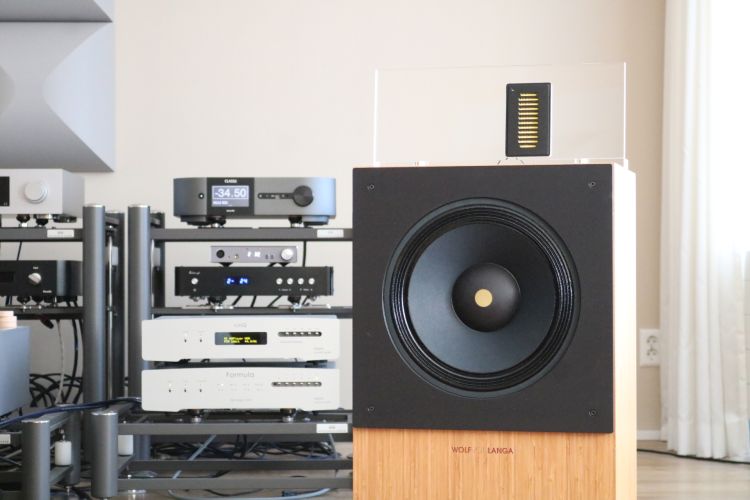
Field Coil transducers
WvL Loudspeakers differ from nearly all other existing loudspeakers in their use of the field coil drive unit. The core of a WvL Drive Unit revolves around unique electromagnets, which are, by principle, superior to every permanent magnet and WvL electromagnets are among the strongest magnets available. The difference is that they are controlled dynamically and are not only static, like a permanent magnet that is charged only once. The control for the WvL Electromagnets is provided by an especially developed Power Management system that results in more precise control of a voice coil than any static magnet.
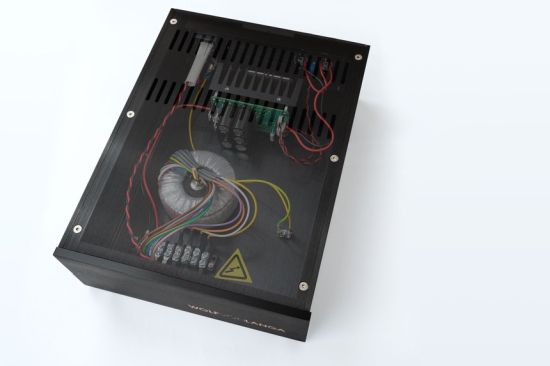
The WvL Field Coil Current Source Power Management unit connects to the speakers via 4m-long, thin and flexible cables.
Of course, there is much more to mention on the topic of Field Coil loudspeakers and the electromagnetic principles but since this article is becoming a little long already and I’ve not even started on describing my listening impressions, I’ll refer those who want to get to the bottom of this to the below Wikipedia links to pages with detailed information.
Lorentz force
Maxwell stress tensor
Eddy current
Electromagnetic field
Setup
The SONs behave similarly to other speakers that I used in this room in that they prefer to be positioned free from the side- and rear walls. With the Magicos out of the way but with the Logans still in place, the SONs were not yet completely happy. While the Magicos behave entirely linearly when in-between the Logans, no matter how I positioned them the SONs’ bass was boomier and less crisp than I recalled it from Ron’s place. This meant that the Logans also had to be moved out of the way. With that done, I repeated the SONs’ positioning process, only to find that, ultimately, they landed pretty much in the same positions as to where the Magicos were. Now, well-free from all walls, the SONs were performing beautifully.
That the Magicos worked so well in-between the Logans while the SONs do not has a lot to do with the Magicos being a closed design and them having a considerably leaner balance. Actually, compared to the SONs, MANY speakers will sound lean. In this room, bass-reflex designs have always preferred free space all around them and although the SONs are no bass-reflex design, their unusually potent bass sounds purest and cleanest when they are positioned free from walls and other objects.
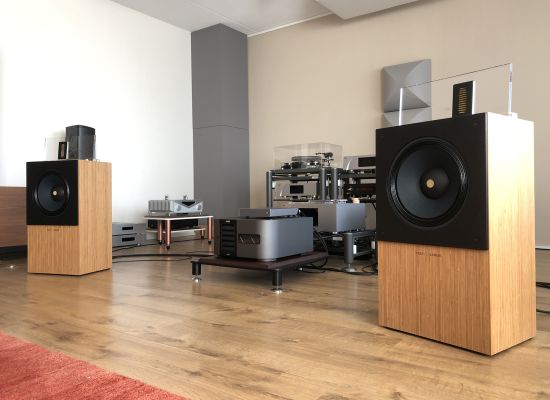
Without exception, so far, the speakers that I used in this room sounded ideal with only a moderate amount of toe-in. The SONs are different and sound best when pointed at the listener’s shoulders, such that the speakers’ inner side panels can just be seen. There’s a perfectly understandable explanation for this. Regular tweeters and other small drivers are usually not very directional but the larger a driver’s diameter becomes, the more directional the driver is. Although the crossover point is specified at 800 Hz, there’s still a good portion of the lower midrange coming from the bass unit and since that driver has a very large diameter, it’s simply more directional. The logical consequence of this is that the sound will have a dip in the lower midrange unless the speakers are toe-in properly. Of course, this can also be used to tailor the sound to personal liking as long as one realizes that deviations from the ideal will offset the speakers’ even balance.
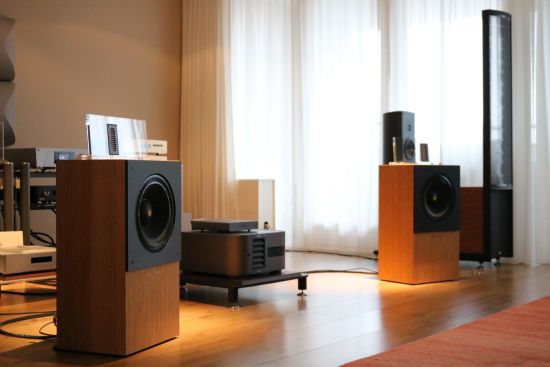
The AMT units are not directional at all, at least not in the horizontal sense. They provide an even distribution of their entire frequency range over the entire width of the 4-seat listening area and that includes the separate seat that is positioned even further to the side. And the tweeters’ range extends even beyond that. Right now, as I am typing this review sitting at a desk in the adjacent kitchen area, I am enjoying an open and articulate, near full-range sound, with only the very top slightly attenuated.
Like ribbon tweeters, the AMT’s do exhibit beaming in the vertical plane and the treble does indeed drop in level when standing up and walking around. But even then, it only concerns the top section. I’ve owned many Apogee speakers and can tell you that, due to their length, and perhaps an even lower crossover points on the MRTW units, these drop off much more severely when you’re standing up.
As the manufacturer mentions in the online documentation: “Just as a singer’s voice has little to do with the size of his body, the physical size of the brand new SON has little to do with its sound… at only about 90 cm high, the SON is soundwise among the biggest.” In terms of power, dynamics and soundstage width and depth, I could not agree more. The only reservation that I can add is that, due to their relatively low height, the soundstage projects lower to the floor than with taller speakers.
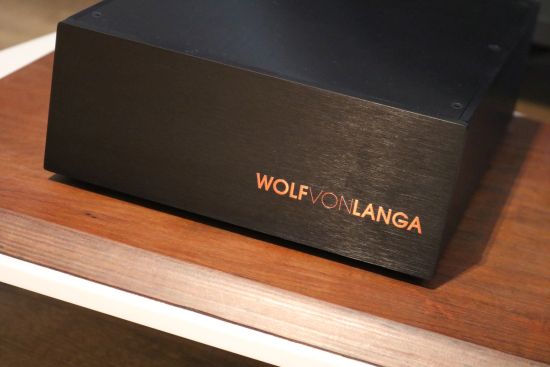
Power
The Current Source Power Management unit came supplied with two 4-meter long DC cables to connect to the speakers. This was easily long enough for the unit to be positioned close to the power outlets. Do note that the default length for these cables is 3 meters but any additional length can be ordered as desired for 59 euros per extra stereo meter. The manual mentions that their length has no influence on the sound but I did find that the placement of the unit does matter and so does the power cable that connects the unit to the mains.
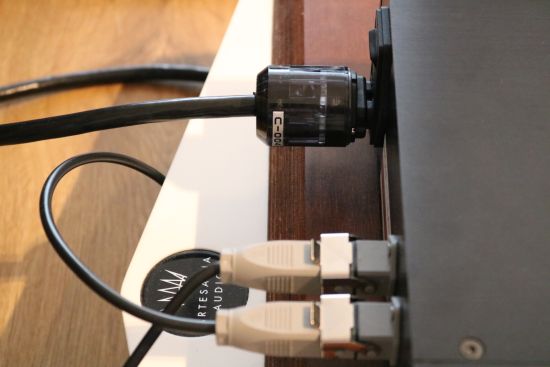
Don’t worry, the unit works just fine when placed on the floor and the speakers strut all the magic that they’re capable of but placing it on top of an equipment platform will result in audible differences. For instance, I found that placement on an Artesania Modular Floor Platform provides a more incisive, more upbeat sound with tighter bass, which I preferred in this system. Depending on the setup, however, the more relaxed perspective of floor placement might also be preferred.
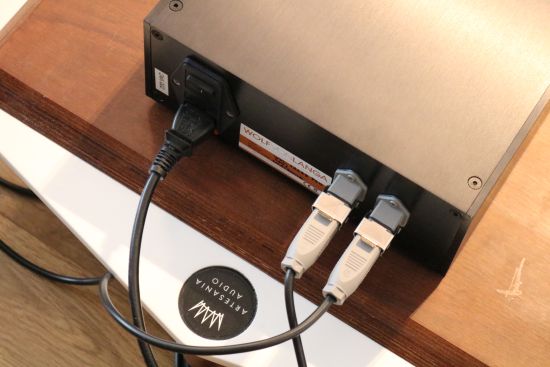
Likewise, I wouldn’t say that there is an ideal power cable per se but it is good to be aware of the differences that can be incurred by the choice of cable. For instance, the majority of my listening was done using an unshielded stock cable and that sounded absolutely fantastic. However, when I later exchanged the stock cable for a Belden 19364 with Bals Schuko and Oyaide C-004 IEC connectors, the sound became very noticeably fuller, a little darker and more sonorous. However, since the SONs have plenty of bass in this room even with the stock cable and they are otherwise every bit as transparent and revealing, I actually preferred the stock cable in this case. Your mileage, as they say, may vary.
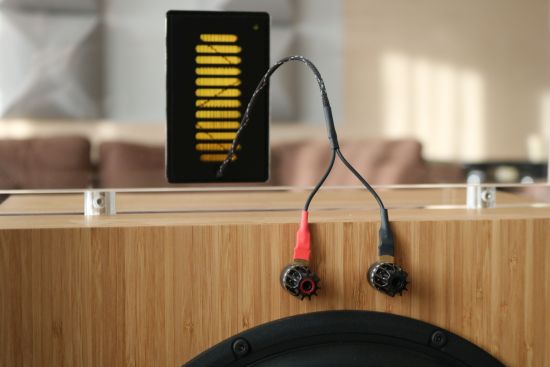
Jumpers and wire connections
As mentioned, the SONs came without jumpers but my speaker cables are all single-wire. Thus, I dug up the only jumpers that I have and made a rooky mistake in the wiring: I connected the speaker cable to the woofer connector and used the jumpers from there to the tweeter connector. From earlier experiences, I already knew that this was not ideal, but somehow, apparently, that part of my mind wasn’t working this time. The resulting sound was impressive but not yet as linear and transparent as I remembered it from Ron’s place.
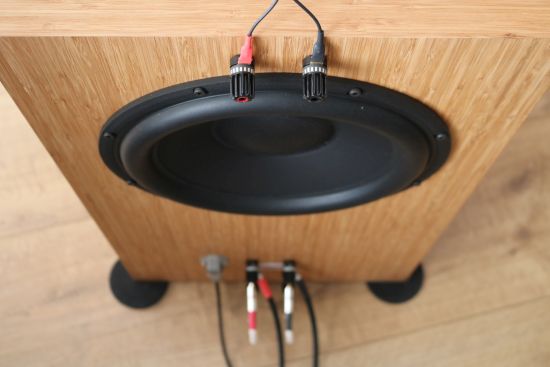
Then, it struck me: the connections had to be reversed! With the speaker cable connected to the tweeter sections and the jumpers between tweeters and woofers, the sound was immediately much improved. I knew that these jumpers were a little smooth-sounding but it had never been as severe as it was this time. As I would learn later, these speakers are considerably more revealing of such relative subtleties as most other speakers.
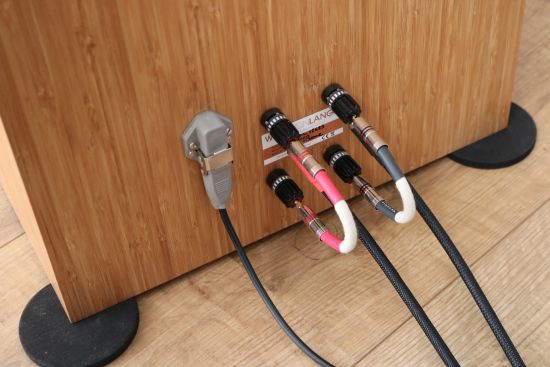
Now, the speakers were beginning to sound as they had done at Ron’s place albeit still a little rounder and fuller in the bass. But before I’ll finally start divulging my listening impressions, there was one final tweak in store: Jena Labs SpeakEasy jumpers with Cardas Rhodium-plated spades.
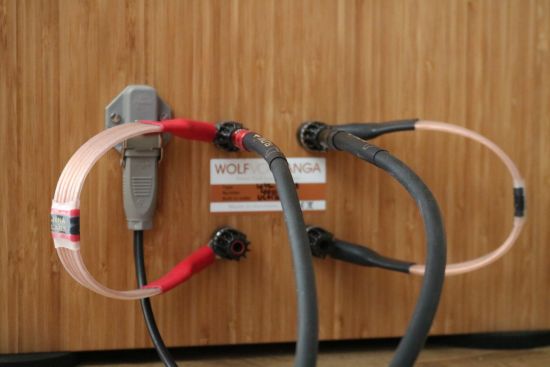
Yes, that was the missing link. With the Jena Labs jumpers in place, the bass aligned fully with the upper midrange and the sound became faster, tighter, more articulate and more transparent but most importantly, it was now entirely coherent. Now, we were cooking with gas!
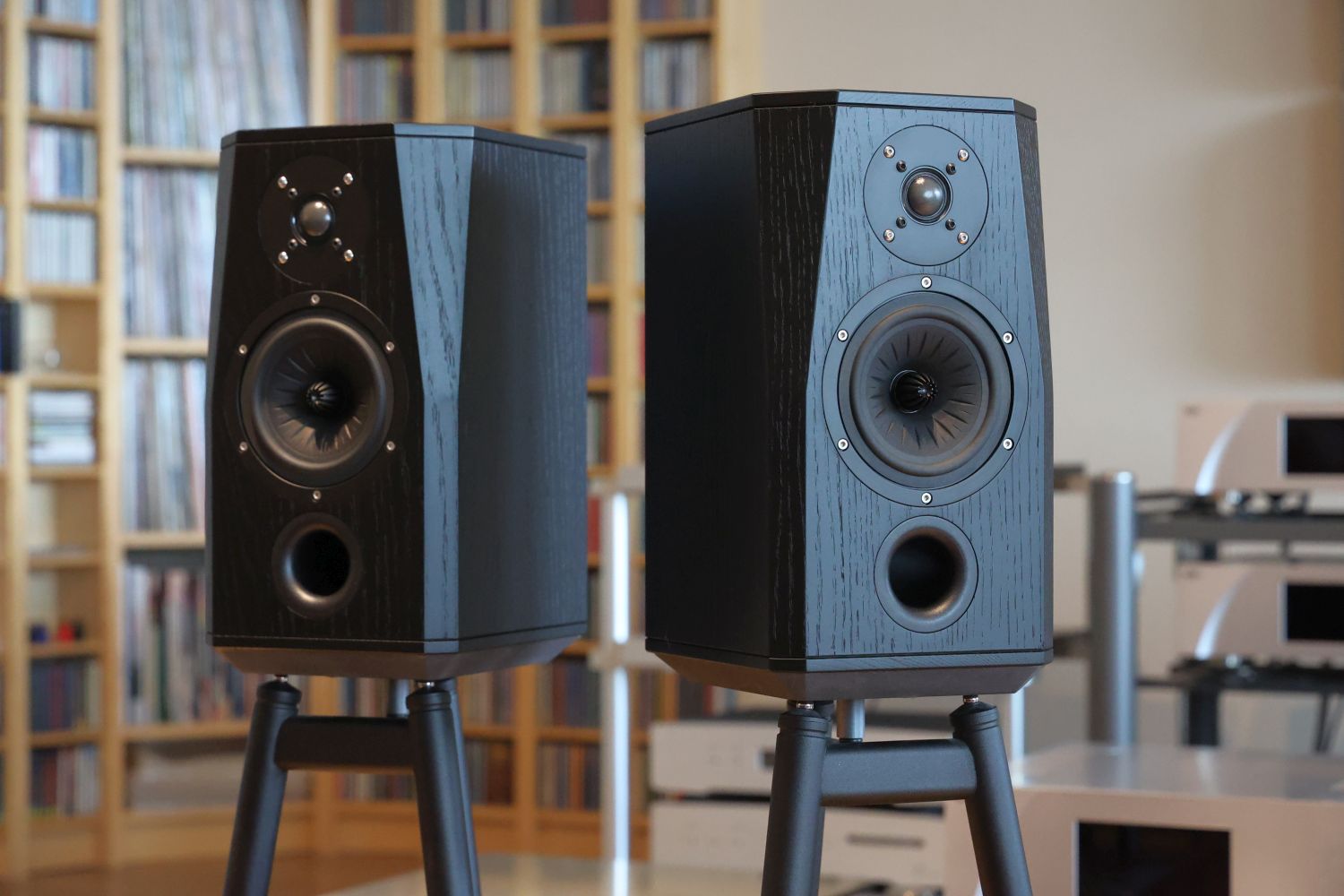
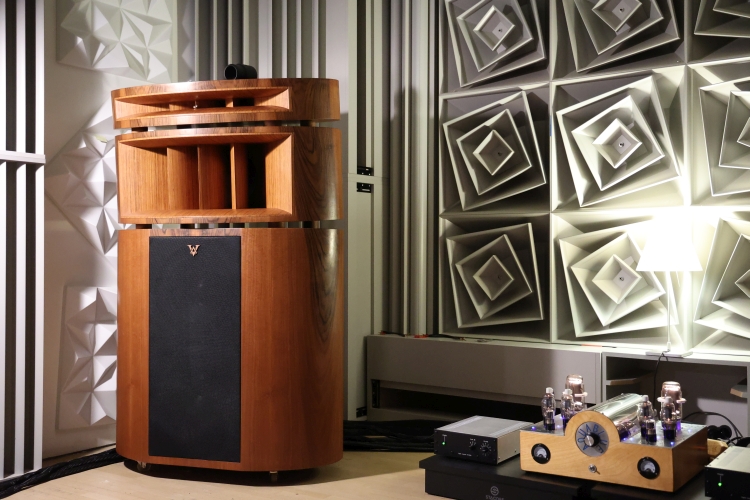
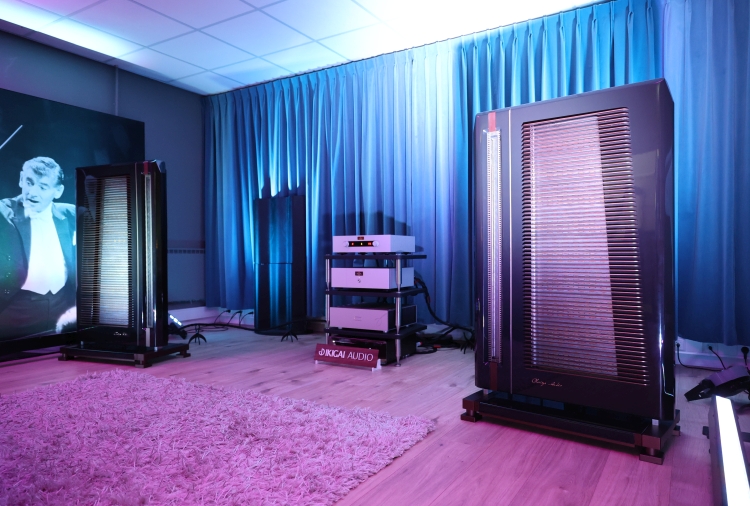
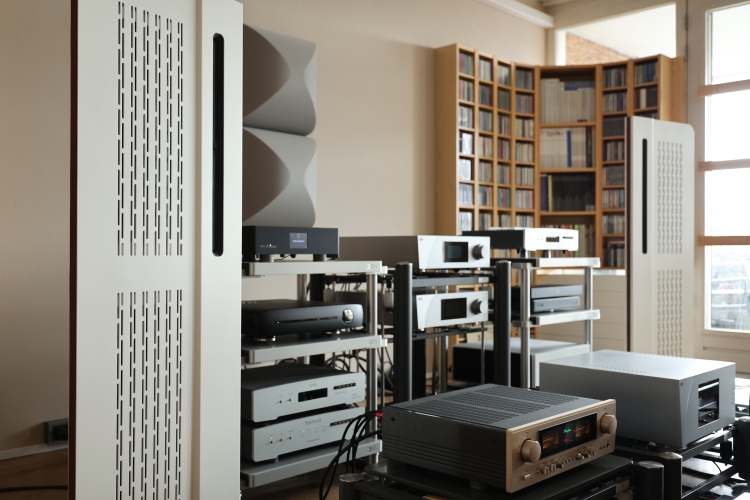
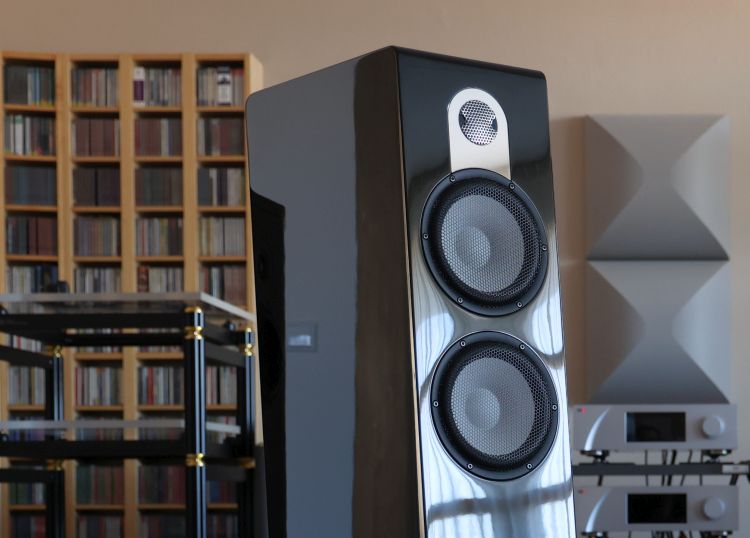
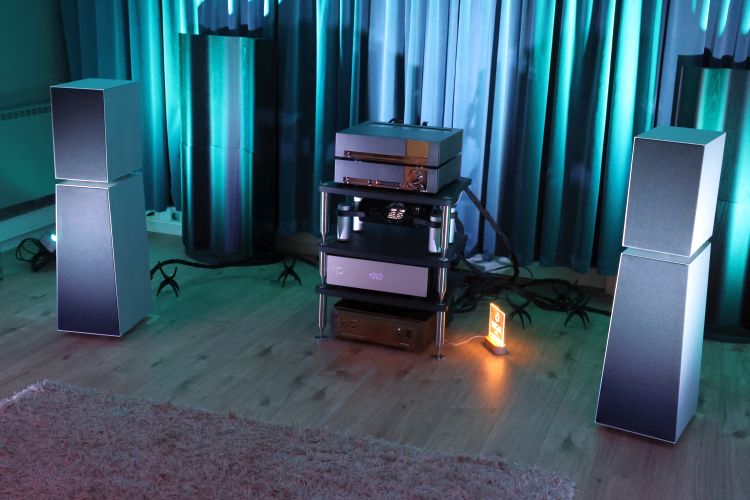
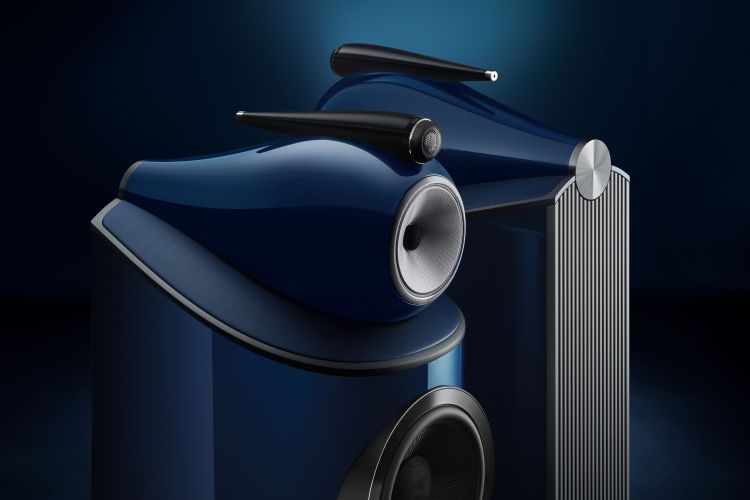
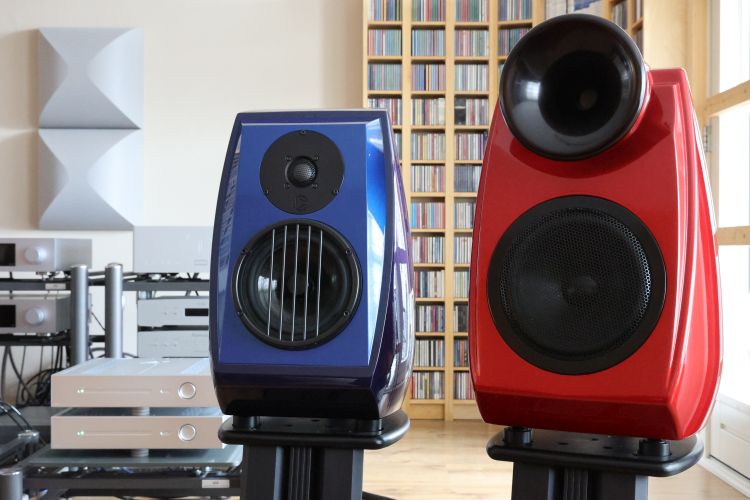
Hello from Bonn in Germany,
many thanks for this formidable review. As I read some very important comparison points to the Magico, etc., and wondered which would be the SONs main strengths against the Aequo Audio Stillas. I am considering both as my next speaker, my main priorities are low-level details, transparency and soundstage.
Many thanks in advance,
Merry Christmas,
Adrian
Hi Adrian, While I’ve not had the SONs and the Stillas available at the same time I can safely say that they are very different. In terms of low-level details, the SONs are the very best that I have ever heard, period. In terms of transparency, the Magicos and Sons are more or less in the same ballpark while the Stillas lag behind a bit. The Magicos do sound more linear than the SONS and Stillas but the SONs are more direct and more revealing. In terms of soundstage focus, depth and layering, the Stillas and SONs are largely comparable and both are better than the Magicos. The biggest differences, however, are in terms of character and overall presentation, as described in detail in the respective reviews.
Hi Chistiaan,
I really enjoyed reading your review and the more I read the more frustration came over me! It’s been a while since these SOUNDS have been eyeing me, these speakers look a lot like my ideal in terms of rendering and personality, that is to say, no makeup or other glitter to try to seduce at all costs, it is pure music, direct, alive, organic, present …! I can’t even imagine what the Chicago loudspeakers from the same manufacturer must look like! Regarding the choice of amplifier, I thought of the Greek tube amp manufacturer, as an integrated amp, the Aeolos Ultima model (KT150 tubes) or as a separate amplifier / preamplifier! there is also the Italian manufacturer Grandinote and its integrated amplifier Shinaï (Class A) with which the SON speakers should give their best! Also consider the cables from the manufacturer of the country of the maple leaf LunaCables (Orange, Red or Black), you should test them! Thank you for your review and happy new year to you !
Hi Christiaan,
Thanks for another interesting review. I was hoping you’d keep the Son speakers in your review set up.
I have a pair of them in a system in another house and previously ran a pair of S1 MkII here in my main system – Albeit both systems have way more modest front end and amplification than your reference gear – the Sons are nonetheless beguiling.
I think it’s your comparisons and analysis with a range of ancillaries that helps readers understand what equipment is capable of with synergy – can’t do that at home.
BTW I changed the main system speakers to A5 a while ago and have been impressed that the multiple drivers haven’t lost too much coherence from the s1’s, while achieving more balance through the full range.
Richard
Hi Richard, thank you for your kind words! Indeed, the SONS are absolutely beguiling. What they did do was move me to sell the Logans. The plan was to get Magico S3mk2’s but, alas, while they obviously have better bass and are slightly more highly resolving, they performed less well than the S1’s in several areas (spaciousness, flow, treble openness and air) and so I am currently only using the S1mk2’s in the main room. If I had more rooms as well as more budget, then I’d likely want to have a pair of SONs as well, especially now that I am reviewing Melody tube amplifiers and having concluded (using the modest Xavian Perla Esclusivas in the other room) that the Everest 211 SET amp is definitely something special. If it works (with uncomplicated and sensitive speakers), SET can be magic and given what the SONs do, the combination could be heaven. Oh, I also noticed that if Magico speakers have one overall quality, it is coherence, indeed, no matter how many drivers they use. However, I do find that the more recent models (most Mk2 S-series models, the A3, and many models in the M2 range) sound quite full and dark. That said, he A5’s actually offer good value for money which is something of an oxymoron for the brand:-)
Hello Christaan,
I am quite tempted by the WvL SON speakers, and in part because of your thorough and excellent review. But given that you found them to be a bit “finicky” about the amplifiers used to power them, I wonder if you might be able to provide any insights into any likely synergy – or lack thereof – with the Circle Labs A200 hybrid integrated amp? I own an A200, and am quite happy with it. However, as it is capable of generating more power than the amplifiers that are typically reported to match well with the SON, and also has a fairly high damping factor and capacitance, I have some concerns.
Any insights that you could provide would be much appreciated.
Best regards for the new year!
Tony
Hi Tony, high power and high power supply capacitance in and of themselves are no problem and can actually be beneficial. The main factor in my opinion for a speaker like the SON is that there shouldn’t be too much control (in essence, damping factor) from an amplifier, for the speaker to sound most free-flowing and emotionally engaging. That said, my CH A1.5 exerts quite a bit more control than the average amplifier, even when set toward 20% local feedback. After all, the amplifier always uses the same amount of feedback but allows the user to adjust the location from 100% global to 100% local. In conclusion, while I think that the SONS will sound most magical when used with powerful tube amplifiers, the majority of transistor amplifiers should also work well, provided they are not too rigid in their delivery.
Hello Tony,
I have the SONs as my main speaker pair. Somehow in contrast with Christiaan systems footprint/paradigm, which obviously allows him to review a large spectrum of components, I purchased them as a „high efficiency“ dynamic speaker to allow me to use the more powerful SETs ( for example Coincident Frankenstein or similar), It was disclosed in an audio magazine here in Germany that Wolf von Langa uses SET from Sun Audio in his system and it is well documented that he used on München shows Meyer or ATM SET amplifiers (all low powered). Ron Ploeger from whom I purchased the speakers recommends however somehow larger amplifiers ( more like 20-30Watt, tube based) having a higher damping factor! I am running them currently with a YBA 50Watt solid state amplifier with excellent results but I am planing to try a hybrid or OTL low power amplifier around 20-30 Watt like the ones from Thöress (Model EHT) or a Berning based design OTL (Linear tube Audio). So for the first iteration an amplifier with no output transformer.
Hope this helps as a hint,
All the best,
Adrian
Thank you, Adrian. I appreciate your input.
An interesting, associated set of questions would also revolve around the WvL STAGE, which has a passive driver. I would guess that it would benefit more from higher powered amps than the SON.
I would like very much to compare the sound of the two models, but travel restrictions are making that difficult at the moment.
All the best,
Tony
Thanks for the feedback, Adrian!
Thank you, Christian. I appreciate your further insights.
Cheers,
Tony
Hi Tony,
I recently upgraded the power supply to the new FCCS PSU for my early edition Son speakers, with an outstanding result. Power clearly makes a big difference for the field coil driver.
I purchased them for a second system that didn’t happen, but they muscled their way into my home system on almost full time duties. It’s driven by a Vitus RI-101 and the results have been impressive compared to my other speakers costing approximately double, though these still have a role.
I’ve also heard Sons in-store driven by Constellation amps to great effect. I wouldn’t necessarily hold back because of the suitability of your existing amp – they are very revealing and may inspire you to upgrade at source end first. Worth a demo with similar equipment if you can. That’s what I’ll do.
Richard
Thanks for chiming in, Richard!
Hi Richard,
Thank you for your contribution to the topic. Your experience is encouraging, and particularly with regard to the Vitus.
All the best for the new year,
Tony
Hi Richard,
I am curious about your experiences with the placement of the SONs, and particularly in relation to the back wall. It appears that a high percentage of users’ images, including Christian’s, show the speakers well away from the back walls. But, oddly enough, Christine von Langa suggested to me that when used along a long wall, as would be the case in my room, the SONs should work well at only “about 30-40cm” out.
I do have a concern that my space, while not exactly small (~29 sqm), could be a bit compressed for use with the SONs. If, for example, I were to bring them one meter out from the back walls, they would be two meters from my listening position, though there would be another meter of space behind me (an open staircase).
If you (or Christian) happen to have any related thoughts, I’d appreciate hearing them.
Cheers,
Tony
Hi Tony, 30-40cm may well work in some rooms but it depends entirely on the room and its oddities. I really can’t make any hard recommendations for your situation. I think that most of the time, the speakers work better when given more space but depending on the circumstances, that space could also be behind the listening position. Sometimes, that works better than the other way around. Bottom line: I’m afraid you just have to try it. Your space of 29 square meters should at least be large enough.
Thank you, Christian. I fully appreciate that there will be vagaries until the speakers are actually auditioned within my specific context, but unfortunately I don’t have the luxury of doing that prior to a purchase.
What you say about the space behind the listening position is interesting, and adds a bit of optimism on my end.
A final question, if you don’t mind: what are your experiences with feet on the SONs? Have you experimented with and without, etc.?
Thank you,
Tony
I have tried the SONs with and without feet and I think I have also written a section about this in the review. In any case, the speakers sound most free-flowing when you use somewhat compliant feet, especially when using an amplifier with a high damping factor or a very controlled sound. However, as always, the bass is tightest with hard couplers. Ron of Callas initially swore by using the speakers directly on the floor but he is now using purpose-made bamboo stands. The bottom line is that there is no prescribed best method. All I can say is that the speakers respond in a familiar and predictable fashion to footers or the lack thereof.
Thank you!
Hi ,
These Sons speakers are at the top of my very short list of speakers with the Grandinote speakers and at the top, the AtlantisLab AT31 speakers (€ 9,990) which I strongly suggest to seek to listen to them urgently! AT31s are UFOs, whatever the style of music! They also have phenomenal power handling! It’s exhilarating! A good hearer !
Good Year !
Hi Tony,
I’m really a novice at positioning but this may help – the first room in which I had the Sons was quite long and narrow, with the speakers against a long brick wall with no side-wall interaction, but necessarily placed quite close to the front wall. They seemed to excel in what I thought were limiting circumstances, but this is consistent with Wolf’s brief comments on placement via email, which sounds like it was in line with the advice given to you by Christine (they’re both very helpful).
I think the passive rear radiator helps for close wall placement (compared to a rear firing port!) but the AMT tweeter likes a bit of space to the sides. I preferred the tweeters to the outside even with the speakers well-spaced.
Currently they have side wall interaction with a kind of “bulkhead” on one side and floor to ceiling window/french doors on the other. There is ~90cm each side of the speakers with 2m spacing. The sidewall interaction is offset with some basic absorption but it can be improved. Next project.
In summary, they seem to handle the combination of close to front wall with no side-wall interaction very well and have no trouble with relatively near-field listening position. Introducing side-wall obstacles is more complex but no game-changer. I think there’s an owner’s manual about, perhaps worth inquiring.
Hope this helps your line of inquiry, Richard
Hi Richard,
Thank you for taking the time to share your experiences – it was quite helpful.
In my case, the room that they would be used in is odd in some respects, but there will be plenty of room from side to side, as well as overhead. Your experiences bolster my confidence that they would be versatile enough to perform well given the relatively compressed front and back spaces.
I understand very well that, like any set of speakers, they are unlikely to reach their full potential in an imperfect space. But that is of little concern to me, as long as they aren’t stifled to any significant degree.
The temptation is strong now, even with the understanding that there are likely to be further temptations to upgrade some of the downstream components!
Cheers,
Tony
Hello Christiaan,
thank you for this detailed review and your work on this wonderful website.
I have WvL SON on my short list together with Pure Audio Project Trio 15 Voxativ.
I understand these are two different concepts – did you ever had a chance to hear these (or similar) open baffle speakers? How would you compare their character to WvL SON?
Currently it is so difficult to travel and listen to different brands of speakers… so these discussions with reviewers are only guidelines for prospective buyers…
Thanks for your answer
All the best
Michal
Hi Michal,
As fortune would have it I have indeed heard the Pure Audio Project speakers. It was on a demo during an audio show meaning no controlled environment nor any direct comparisons, but still, I think I can say a few things about this in comparison to the WvL SONs.
While the SONs are open baffle as far as the treble and midrange are concerned, the bass cabinet’s passive radiator on the rear makes the speaker fall in between the two camps. This is also where a large difference lies. The Pure Audio speakers have no sidewalls and thus have to cope with a lot of cancellation between rear and front and they do this using large woofers. While they do provide deep and powerful bass, my personal feeling is that this is more of the Apogee planar magnetostatic kind than being akin to a dynamic speaker in a cabinet. The SONS also have very deep bass but it’s more of the punchy and articulate kind as you would expect from a dynamic driver in an enclosure. When playing loudly, the SONs seem to breeze through while asking for more. When playing loudly with the Pure Audio Project speakers I feel that the bass units have to work very hard to keep up with the midrange.
Finally, the midrange and treble are very different in character tonality. The SONs’ ribbon is supremely airy and refined and I find it even better than the Magico tweeters in these respects but it’s in the lower midrange where the Voxativ’s properties may divide opinion. For me, they are too colored-sounding (the familiar cupped-hands effect) but I also can’t deny that they provide a very tangible and realistic property to acoustic instruments, perhaps more so than the SONs that are slightly mellow in that area. So, it’s not an easy one-or-the-other between these two speakers. You have to know what it is you are after and decide accordingly.
Thank you Christiaan, apreciate your response!
It seems that I know my direction now.
Btw. I had similar feeling from bass units on another open baffle speakers (Spatial) that I heard recently.
M
Hallo Christian. Just got my son.s in the house and machted them with the New nat gm 70 amp. Wonderfull combination. Now i am testen some footers
Hallo Christian, would the von langa Son match with the Jorma duality speaker cables
Thx
Yes, I think that will match very nicely. Duality is smooth but very seductive. The SONs are expressive and open, so I expect that will match well. You might also try Jorma Unity for a slightly leaner and crisper delivery.
Thx for your info appreciate it.greeting Dirk
Its jorma duality vs rhe ansuz a2
The duality plays better then the Ansuz a 2 but in the end I Decided to go for the utility Jorma